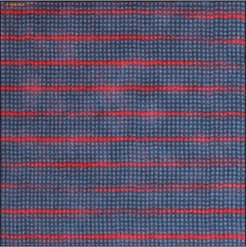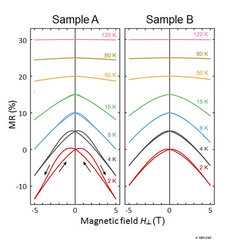Ferromagnestism and Conductivity in Atomically Thin SrRuO3
The creation of an atomically thin ferromagnetic and conducting electron system has been a long-standing goal in science. If realized, it will combine the advantages of two-dimensional electron systems with those of magnetic materials, i.e., state control by electric and magnetic fields. Atomically thin transition metal films can remain ferromagnetic, but these electron systems are only stable in vacuum, limiting their impact. Moreover, these electron systems are not electrically isolated because the substrates are metallic. Transition metal oxide heterostructures circumvent these issues of stability and can be grown on insulating substrates, thus realizing isolated electron systems that can be electrically contacted and controlled. Most magnetic and conducting transition metal oxide materials, however, lose their functional properties well before the single-unit-cell layer thickness is reached; typically, a non-conducting and non-magnetic dead-layer is present.


Arrows denote the direction of the sweep. The MR curves measured at different temperatures were offset to avoid overlap.
SrRuO3 is one of the oxide materials with the highest conductivity and it is chemically inert. Therefore, it is widely used in applications such as electrodes of capacitors. In addition, it is an itinerant ferromagnet with a saturation moment of 1.6 μB/Ru and a Curie temperature TC of 160 K. Several studies have investigated the behavior of ultrathin SrRuO3 films and SrRuO3 superlattices. In most studies, however, an insulating state is observed when the SrRuO3 thickness is less than three unit cells. By a combination of embedding the SrRuO3 in SrTiO3 and improving the sample quality, we managed to maintain conductivity and ferromagnetism.
We realized atomically thin SrRuO3 heterostructures (Fig. 1) that are conducting and ferromagnetic (Fig. 2). In our samples, the electron systems comprise only a single RuO2 plane. Magnetic hysteresis is observed for T < 25 K and signals of magnetism persist up to ~100 K. These structures are a rare example of two-dimensional ferromagnetism and the first demonstration of two-dimensional ferromagnetism due to indirect exchange. They may therefore serve as a model system for further theoretical studies. The conductance and TC of atomically thin SrRuO3 is expected to increase with additional charge carrier doping, possibly resulting in a triplet superconducting groundstate. With recent advances in electric-field gating technology, we expect electric-field control of the conductivity and ferromagnetism to become possible.

